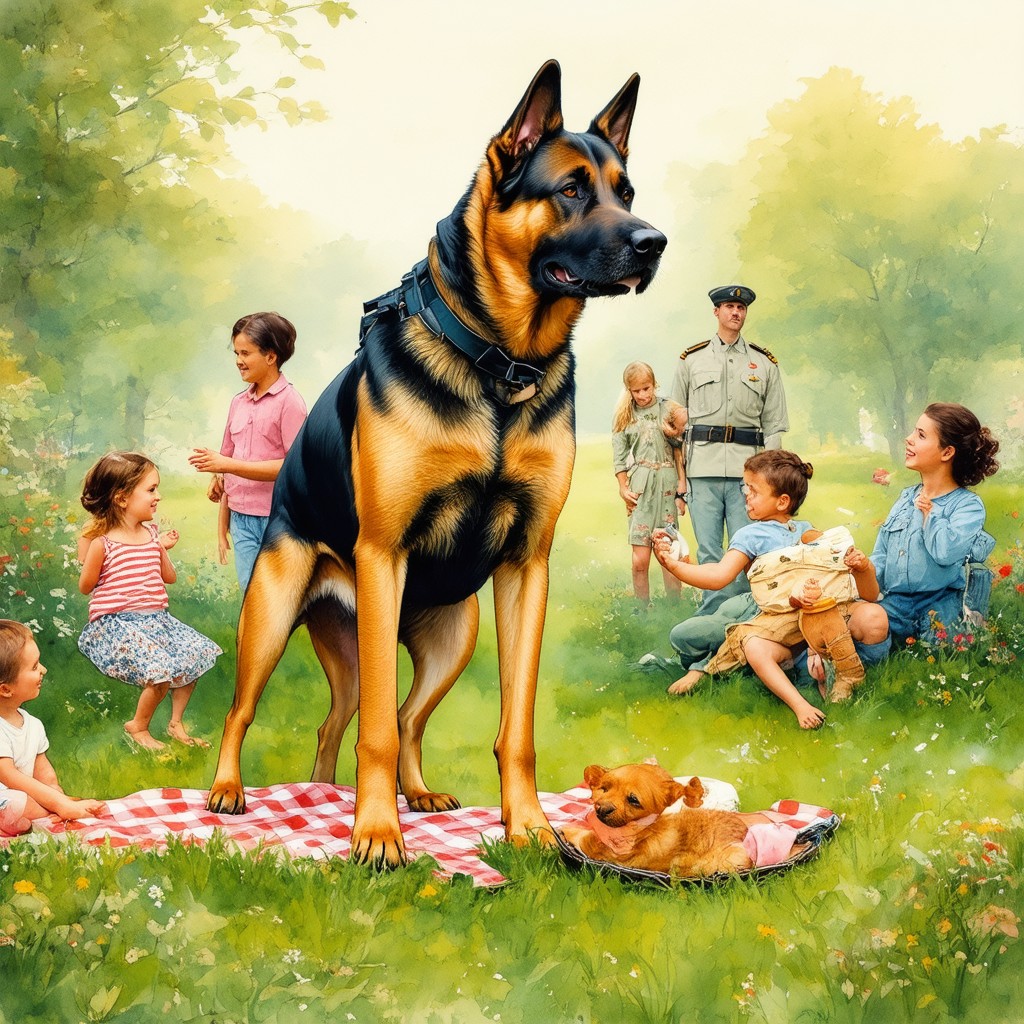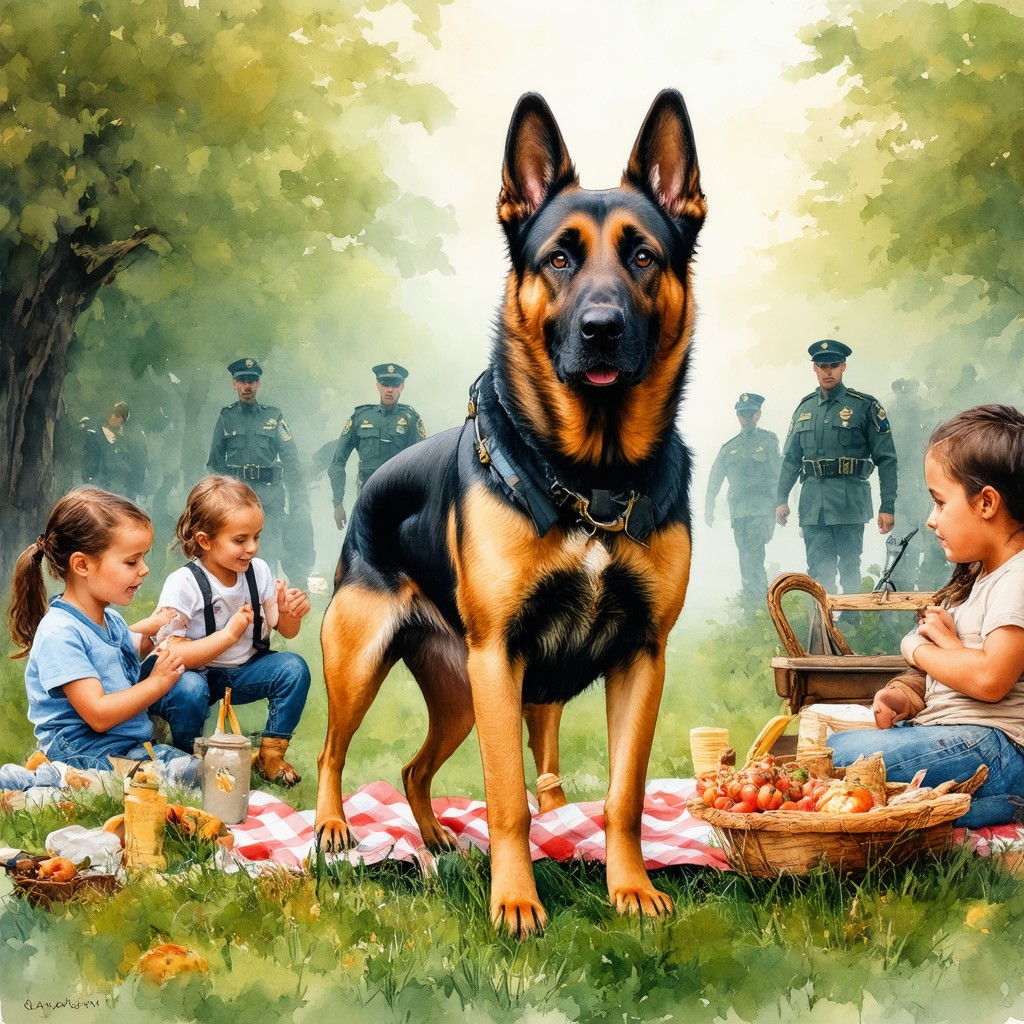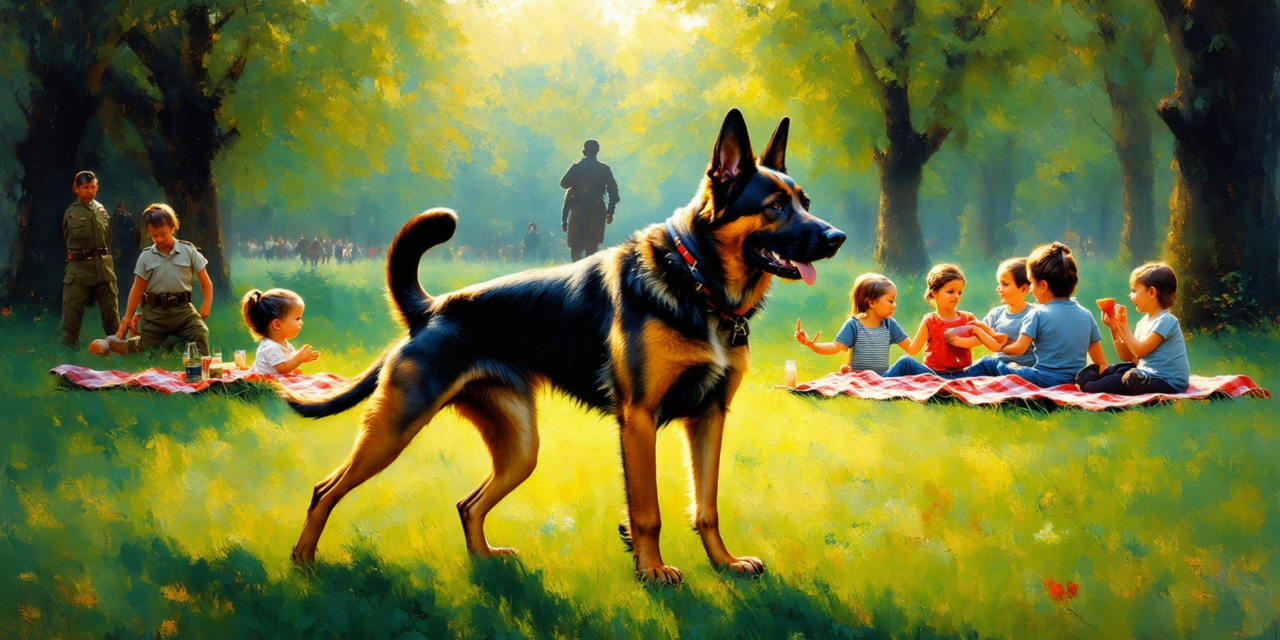Key Takeaways
- Intelligent and Versatile: The Belgian Malinois is highly intelligent, making it an excellent choice for families who can provide training and mental stimulation.
- High Energy Requirements: This breed needs significant daily exercise (at least 1-2 hours) to stay healthy and prevent behavioral issues.
- Protective Nature: Belgian Malinois are naturally protective, providing security but requiring proper socialization to manage their instincts.
- Best for Experienced Owners: Families with prior dog ownership experience are better suited for this breed due to their complex needs and strong personalities.
- Child-Friendly Potential: With appropriate training and socialization, Belgian Malinois can be great companions for children, promoting active play and bonding.
- Cost Considerations: Expect to pay between $1,000 to $3,000 for a Belgian Malinois puppy, with ongoing costs for food, grooming, and training.
Welcome to our comprehensive guide on the Belgian Malinois, a breed renowned for its intelligence, agility, and versatility. In this article, we will explore whether the Belgian Malinois is the right family dog for you, delving into its unique characteristics and temperament. We will also discuss the specific needs of this breed, potential challenges for prospective owners, and why the Belgian Malinois is a favored choice among military and police forces. Additionally, we will address common misconceptions about their behavior, the suitability of Malinois as house pets, and their interactions with children. As we navigate through the various aspects of owning a Belgian Malinois, including cost considerations and training techniques, you will gain valuable insights to help you make an informed decision. Whether you are considering adopting a Belgian Malinois puppy or are simply curious about this remarkable breed, our guide aims to provide you with all the information you need.
Is Belgian Malinois a good family dog?
The Belgian Malinois can be a good family dog, but several factors must be considered to ensure a successful match. This breed is known for its intelligence, loyalty, and protective nature, making it a popular choice among families who are active and engaged in their dog’s upbringing.
Overview of the Belgian Malinois breed
Belgian Malinois are medium-sized dogs that belong to the Belgian shepherd family. They are often recognized for their distinctive fawn-colored coat and black mask. This breed is highly versatile, excelling in various roles such as working dogs in police and military settings, as well as beloved family pets. Their strong drive for work and play makes them suitable for active families who can provide the necessary exercise and mental stimulation.
Belgian Malinois temperament and characteristics
- High Energy Needs: Belgian Malinois are exceptionally energetic and require significant daily exercise and mental stimulation. Families with busy lifestyles may find it challenging to meet these needs. Engaging in activities such as agility training, obedience classes, and interactive play can help channel their energy positively.
- Strong Prey Drive: This breed has a strong prey drive, which can lead to chasing behaviors. It’s essential to supervise interactions with small children and other pets to prevent any potential incidents. Training techniques that focus on impulse control can mitigate these tendencies.
- Protective Nature: Malinois are naturally protective of their families and territory. This trait can be beneficial for family security but may lead to issues with strangers if the dog is not properly socialized. Early socialization with various people, environments, and other animals is crucial to develop a well-rounded temperament.
- Potential for Aggression: Without adequate socialization and training, Belgian Malinois can become wary of strangers and other dogs, which may lead to aggressive behaviors. Consistent training and positive reinforcement methods are vital to foster a balanced demeanor.
- Need for Experienced Owners: This breed is best suited for experienced dog owners who can manage their intelligence, energy levels, and potential behavioral issues. First-time dog owners may struggle with the challenges posed by this breed.
- Benefits: When properly raised and trained, Belgian Malinois can be fiercely loyal and make excellent family companions. Their intelligence and eagerness to please can lead to a rewarding relationship with dedicated owners.
In summary, while Belgian Malinois can thrive in a family environment, they require committed training, socialization, and exercise. Families considering this breed should evaluate their lifestyle and readiness to meet the dog’s needs to ensure a harmonious living situation. For more insights on dog training and behavior, resources from reputable organizations like the American Kennel Club can provide valuable guidance.

Who Should Not Own a Belgian Malinois?
The Belgian Malinois is a highly intelligent and energetic breed, originally developed for herding and protection work. While they can be wonderful companions for the right owners, there are specific individuals who should reconsider owning a Belgian Malinois:
- Inexperienced Dog Owners: This breed requires a knowledgeable handler who understands canine behavior and training techniques. First-time dog owners may struggle with the Malinois’ strong will and need for consistent training.
- Families with Young Children: The Belgian Malinois has a high prey drive, which can lead to chasing after small children or pets. Families with very young children may find this breed’s energy and instinctual behaviors challenging to manage safely.
- Individuals with a Sedentary Lifestyle: Malinois thrive on physical activity and mental stimulation. Owners who lead a sedentary lifestyle or cannot commit to daily exercise and training may find this breed overwhelming.
- Those Seeking a Low-Maintenance Pet: The Belgian Malinois requires significant time and effort for training, socialization, and exercise. Prospective owners should be prepared for a high level of commitment.
- People Living in Small Spaces: This breed is not well-suited for apartment living unless the owner can provide ample exercise opportunities. A lack of space can lead to behavioral issues stemming from boredom and pent-up energy.
- Individuals Unprepared for Grooming Needs: While the Malinois has a short coat, they do shed and require regular grooming to manage their coat and skin health.
For those considering a Belgian Malinois, it is crucial to assess your lifestyle, experience with dogs, and ability to meet the breed’s needs. Consulting with a professional dog trainer or behaviorist can provide valuable insights into whether this breed is a suitable match for you.
Understanding the Needs of the Belgian Malinois
The Belgian Malinois is not just a pet; it is a working dog that requires a specific environment and lifestyle to thrive. This breed needs:
- Regular Exercise: Daily physical activity is essential. Malinois dogs require at least an hour of vigorous exercise each day, including walks, runs, and playtime.
- Mental Stimulation: Engaging activities such as obedience training, agility courses, and interactive toys are crucial to keep their minds sharp and prevent boredom.
- Socialization: Early and ongoing socialization is vital to ensure a well-rounded temperament. Exposing them to various environments, people, and other animals helps mitigate potential behavioral issues.
- Consistent Training: The Belgian Malinois responds best to positive reinforcement training methods. Consistency and patience are key to developing a strong bond and ensuring good behavior.
Understanding these needs is essential for anyone considering bringing a Belgian Malinois into their home. Without the proper environment and commitment, both the dog and owner may face challenges.
Why Do Navy SEALs Use Belgian Malinois?
Navy SEALs utilize Belgian Malinois dogs due to their exceptional qualities that align with the demands of military operations. Here are the key reasons for their preference:
- Intelligence: Belgian Malinois are highly intelligent and trainable, allowing them to quickly learn complex tasks and commands. This cognitive ability is crucial for missions that require problem-solving and adaptability.
- Scent Detection: These dogs possess an extraordinary sense of smell, which is essential for detecting explosives, narcotics, and other substances. Their olfactory capabilities are often enhanced through specialized training, making them invaluable in reconnaissance and search operations.
- Athleticism: The breed is known for its agility and endurance. Belgian Malinois can navigate various terrains and perform physically demanding tasks, such as scaling obstacles or pursuing suspects, which is vital in high-stakes environments.
- Versatility: They are adaptable to different roles, including tracking, apprehension, and protection. This versatility allows Navy SEALs to deploy them in a range of scenarios, from urban settings to wilderness operations.
- Loyalty and Bonding: Belgian Malinois form strong bonds with their handlers, which enhances teamwork and communication during missions. This loyalty is critical in high-pressure situations where trust is paramount.
- Extreme Environment Adaptability: These dogs can thrive in various climates and conditions, from deserts to cold environments, making them suitable for diverse operational theaters.
In summary, the combination of intelligence, scent detection prowess, athleticism, versatility, loyalty, and adaptability makes Belgian Malinois the preferred choice for Navy SEALs in their specialized operations. For further insights into the training and deployment of military working dogs, refer to resources from the American Kennel Club.
The History of Belgian Malinois in Military and Police Work
The Belgian Malinois breed has a rich history in military and police work, dating back to the late 19th century. Originally bred for herding, these dogs quickly demonstrated their capabilities in various roles, including search and rescue, tracking, and protection. Their keen intelligence and strong work ethic made them ideal candidates for military service.
During World War I and World War II, Belgian Malinois were employed as messenger dogs, sentries, and even in search and rescue operations. Their agility and ability to navigate challenging terrains allowed them to excel in combat zones. Today, they continue to serve in various military and law enforcement capacities, showcasing their enduring legacy as reliable working dogs.
For those interested in adopting a Belgian Malinois, resources like Petfinder provide valuable information on available dogs and adoption options.
Do Belgian Malinois Turn on Owners?
The Belgian Malinois is a highly intelligent and versatile breed known for its loyalty and protective instincts. While they are generally not prone to turning on their owners, understanding their behavior is crucial for fostering a positive relationship. Here are key points to consider:
Addressing Common Misconceptions About Belgian Malinois Behavior
- Temperament: Belgian Malinois are confident and alert, displaying neither shyness nor aggression in new situations. They may be reserved with strangers but are typically affectionate and loyal to their families.
- Training and Socialization: Proper training and early socialization are essential. Malinois thrive on structure and positive reinforcement. Inadequate training can lead to behavioral issues, including aggression. According to the American Kennel Club, consistent training helps mitigate any potential for aggressive behavior.
- Protective Nature: This breed is naturally protective of their owners and property. While this trait is beneficial for security, it can lead to overprotectiveness if not managed correctly. Owners should establish themselves as the pack leader through consistent training and socialization.
Importance of Proper Training and Socialization for Malinois Dogs
- Exercise Needs: Belgian Malinois require significant physical and mental stimulation. Insufficient exercise can lead to boredom and behavioral problems. Engaging in activities such as agility training, obedience classes, and interactive play can help channel their energy positively.
- Understanding Triggers: Recognizing what may trigger aggressive behavior is vital. Factors such as fear, lack of socialization, or feeling threatened can lead to defensive actions. Owners should be aware of their dog’s body language and stress signals.
- Professional Guidance: If concerns about aggression arise, consulting with a professional dog trainer or behaviorist can provide tailored strategies to address specific issues. Resources like the American Kennel Club offer guidance on finding qualified professionals.
In summary, while Belgian Malinois are not inherently prone to turning on their owners, their behavior is heavily influenced by training, socialization, and environmental factors. By providing a structured environment and understanding their needs, owners can cultivate a strong, positive bond with their Malinois.

Can a Belgian Malinois be a house dog?
Yes, a Belgian Malinois can be a house dog, but it requires careful consideration of their unique needs and characteristics. Originally bred for herding, this breed is known for its intelligence, high energy levels, and strong work ethic. Here are key factors to consider when determining if a Belgian Malinois is suitable for your home:
- Exercise Requirements: Belgian Malinois need substantial physical activity to thrive. Daily exercise routines should include at least 1-2 hours of vigorous activities such as running, agility training, or interactive play. Without adequate exercise, they may develop behavioral issues.
- Mental Stimulation: This breed is highly intelligent and requires mental challenges to prevent boredom. Engaging them in obedience training, puzzle toys, or scent work can help satisfy their cognitive needs. Incorporating training sessions that utilize positive reinforcement techniques can enhance their learning experience.
- Socialization: Early socialization is crucial for a Belgian Malinois. Exposing them to various environments, people, and other animals can help them develop into well-rounded companions. Regular interactions with other dogs and participation in dog sports can be beneficial.
- Space Considerations: While they can adapt to living indoors, Belgian Malinois thrive in homes with ample space to move around. A secure yard is ideal for them to play and explore safely.
- Training and Leadership: Consistent and firm training is essential. Belgian Malinois respond best to owners who can establish themselves as strong leaders. Positive reinforcement methods are recommended to build a trusting relationship.
- Family Compatibility: They can be good family pets if properly trained and socialized. However, their high energy and protective instincts may not be suitable for families with very young children or other small pets without proper introductions.
- Health Considerations: Regular veterinary check-ups and a balanced diet are vital for maintaining their health. Common health issues in the breed include hip dysplasia and certain skin conditions.
In conclusion, while a Belgian Malinois can be a wonderful house dog, they require dedicated owners who can provide the necessary exercise, training, and mental stimulation. For more detailed guidance on caring for a Belgian Malinois, resources such as the American Kennel Club offer valuable insights into breed-specific needs and training techniques.
Living arrangements for Belgian Malinois
When considering living arrangements for a Belgian Malinois, it’s essential to create an environment that caters to their active lifestyle. Here are some tips to ensure your home is suitable for a Malinois:
- Secure Outdoor Space: A fenced yard is ideal for a Belgian Malinois, allowing them to run and play safely. Ensure the fence is high enough to prevent jumping, as these dogs are agile and can easily scale low barriers.
- Indoor Space: While they can adapt to indoor living, providing enough room for them to move around comfortably is crucial. Designate a space for their bed and toys to create a sense of belonging.
- Routine and Structure: Establishing a daily routine helps a Belgian Malinois feel secure. Regular feeding times, exercise schedules, and training sessions contribute to their well-being.
- Interactive Environment: Incorporate interactive toys and activities that challenge their minds. This can include puzzle feeders or training games that stimulate their intelligence.
By ensuring your living arrangements meet the needs of a Belgian Malinois, you can foster a happy and healthy environment for your furry companion.
Are Belgian Malinois Child Friendly?
Belgian Malinois can be child-friendly, but their compatibility largely depends on proper training, socialization, and individual temperament. Here are key points to consider:
- Temperament: Belgian Malinois are known for their intelligence, loyalty, and protective nature. They can be affectionate with children when raised in a nurturing environment. Early socialization is crucial to ensure they are comfortable around kids.
- Training: Consistent training is essential. Positive reinforcement methods work best, as they respond well to rewards. Teaching commands and boundaries helps the dog understand acceptable behavior around children.
- Supervision: Always supervise interactions between Malinois and young children. While they can be gentle, their high energy levels and herding instincts may lead to unintentional rough play.
- Activity Level: Belgian Malinois are highly active and require regular exercise. Engaging them in playtime with children can foster a strong bond. Activities like fetch or agility training can be beneficial.
- Protective Instincts: This breed has a natural protective instinct, which can be beneficial in a family setting. However, it’s important to manage this trait to prevent over-possessiveness or jealousy, especially if the dog perceives a threat to the children.
- Socialization: Expose your Malinois to various environments, people, and other animals from a young age. This helps them develop a well-rounded personality and reduces the likelihood of fear-based aggression.
- Professional Guidance: Consulting with a professional dog trainer or behaviorist can provide tailored strategies for integrating a Belgian Malinois into a family with children. Resources like the American Kennel Club (AKC) offer valuable insights into breed characteristics and training tips.
In conclusion, while Belgian Malinois can be child-friendly, it requires commitment to training, socialization, and supervision. By fostering a positive environment, families can enjoy the companionship of this intelligent and loyal breed. For further guidance on integrating pets into family life, consider resources from reputable organizations such as the AKC or local animal behaviorists.
Training Belgian Malinois for Family Dynamics
Training a Belgian Malinois to thrive in a family environment is essential for ensuring harmonious interactions with children and other family members. Here are some effective strategies:
- Start Early: Begin training and socialization as early as possible. Puppies are more adaptable and can learn to interact positively with children when exposed to them from a young age.
- Use Positive Reinforcement: Reward-based training methods are highly effective with Belgian Malinois. Use treats, praise, and playtime to reinforce good behavior, especially during interactions with children.
- Teach Basic Commands: Commands such as “sit,” “stay,” and “leave it” are crucial for managing your Malinois around children. These commands help establish boundaries and ensure safety during playtime.
- Encourage Calm Behavior: Teach your Malinois to remain calm during family activities. This can be achieved through structured play and training sessions that promote relaxation and focus.
- Involve the Family: Make training a family affair. Involve all family members in the training process to create consistency and strengthen the bond between your Malinois and the entire family.
- Seek Professional Help: If challenges arise, consider enlisting the help of a professional dog trainer who specializes in Belgian Malinois. They can provide tailored strategies to address specific behavioral issues.
By implementing these training techniques, families can ensure that their Belgian Malinois integrates smoothly into family life, fostering a loving and safe environment for both the dog and children.
Belgian Malinois Cost and Availability
When considering adding a Belgian Malinois to your family, understanding the cost of Belgian Malinois and their availability is crucial. This breed, known for its intelligence and versatility, comes with various price points influenced by several factors.
Belgian Malinois Price and Factors Affecting Cost
The price for Belgian Malinois can vary significantly based on factors such as breeder reputation, location, and the dog’s lineage. On average, you can expect to pay between $1,000 to $3,000 for a Belgian Malinois puppy for sale. Here are some key factors that influence the cost:
- Breeder Reputation: Reputable breeders who prioritize health testing and proper socialization often charge higher prices. This investment ensures you are getting a well-bred puppy.
- Location: Prices may vary depending on the region. For instance, Belgian Malinois for sale in Belgium might be more affordable compared to those in the United States due to demand and availability.
- Lineage: Dogs from champion bloodlines or those with exceptional training backgrounds may command higher prices.
- Age and Training: Puppies typically cost less than trained adults. If you are looking for a trained Malinois dog, expect to pay a premium.
Additionally, consider the ongoing costs associated with owning a Malinois dog, including food, grooming, veterinary care, and training. These expenses can add up, making it essential to budget accordingly.
Where to Find Belgian Malinois for Sale and Adoption Options
Finding a Belgian Malinois can be done through various channels. Here are some reliable options:
- Reputable Breeders: Look for breeders who are members of recognized organizations like the American Kennel Club. They often provide health guarantees and ensure the puppies are well-socialized.
- Rescue Organizations: Consider adopting from a rescue. Websites like Petfinder list available Belgian Malinois rescue dogs, offering a chance to provide a loving home to a dog in need.
- Online Marketplaces: Platforms like the AKC Marketplace feature listings for Belgian Malinois puppies for sale, allowing you to connect with breeders directly.
By exploring these options, you can find a Belgian Malinois that fits your lifestyle and budget, ensuring a rewarding companionship.













